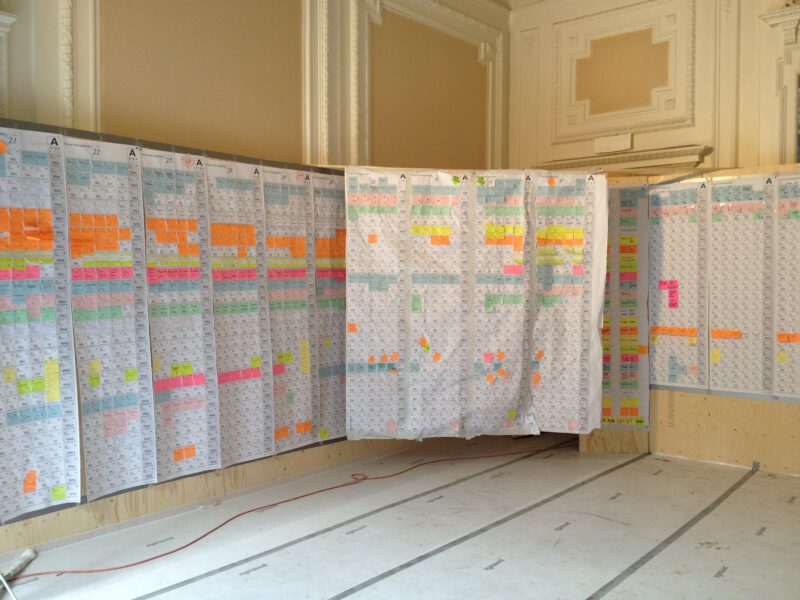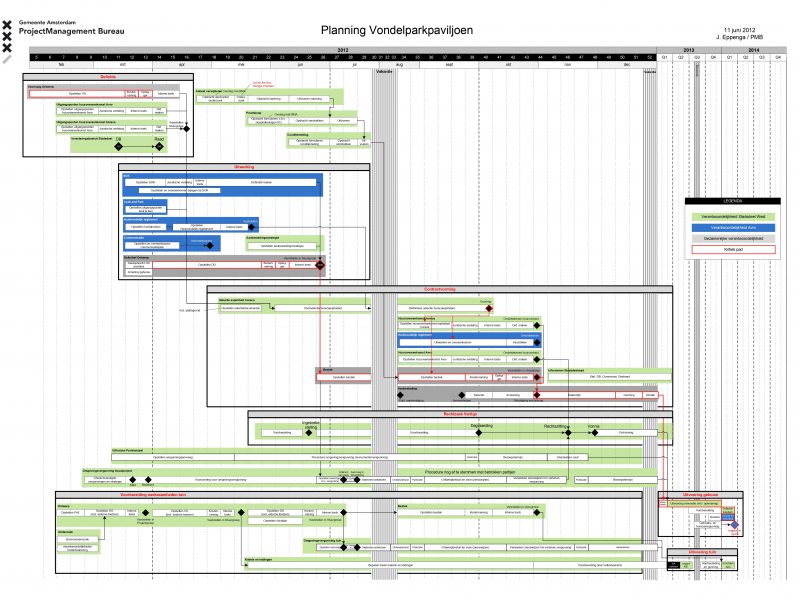Maybe starting is the most challenging phase of large construction projects. The reason why scoping is extremely important and the reason why we discuss setting up projects during the first weeks of our course. There are several reasons to pay attention to scoping during the first week. I would like to address two of them in this post. The first is to understand what the project is about and the second is what your assignment and the assignment of others is.
The project scope defines what the project is. I like the boundaries approach: “This is within the boundaries and part of the project and this is out of the boundaries and therefore no part of the project”. The scope definition is important for the client, for you, and your team, in order to know what the aim of the project and your collaboration is. For instance. If the aim is to design and construct a house maybe the garden is not part of your project. The garden could be organized as a separate project and not within your project scope. For the client, the house and the garden are his/her scope. Or, the goal is to design and construct a theatre but the public space around it is not part of the project. The latter will be the project and responsibility of the municipality. Your project is bound by the construction of the theatre.
The second important reason to scope is to be able to define your responsibilities and the responsibilities of your team members, because your tasks, your team members’ tasks, and the tasks of your client are based on the project scope. Let’s call it the work scope. Remember that the work scope is not the same as the project scope and not the same for all. Partners will have different scopes for their particular work and tasks. The task of an architect is to design the thing and not to construct it. Constructing it is the task of the contractor. Your task or assignment as the manager is also based on the project scope but is not the same as the tasks of the architect or the contractor. Maybe you are responsible for a successful conclusion in the end, at delivery. Your task is managerial. You do not make the architectural or structural design, but you design and steer the process, the organization. You will not construct the thing but you will steer the tender process, steer the contract, see that the quality is checked, and the contractor builds according to specifications.
Scoping is part of the initial phase of a project and is often the basis of a feasibility study. A scope definition can be lean or extensive. If a family wants a house, maybe the budget defines the scope and the scope will become clear through first discussions with the architect. However, if your assignment is a theatre or a hospital extensive work will be needed to define the project and estimate a realistic budget. Most of the time, not an easy and quick task because you will need a lot of information without knowing much about the future. Setting up a large project can take years sometimes.
During the first week of our course, we will read a paper by Chung-Suk Cho (Cho et all 2001), Building Project Scope Definition using Project Definition Rating Index (PDRI). The paper discusses the PDRI model as a tool for an (extensive) scope definition. The index is divided into 3 sections, 11 categories, and 64 elements. The 3 sections are about project decision, project design, and execution. Remarkable is that the scope index is much broader than a project brief you are maybe acquainted with and in which the focus is mostly on the project design, “the what”. The first and third sections of the PDRI are more about decision-making, the process, strategy, and “The how and why”, interesting for us managers.
I would like to give an example.
Lately, I have been asked for the management of a project in Amsterdam. The aim is to construct a primary school with 18 classrooms, a kinder garden, an underground parking place, a sports hall, with a canteen and a stand. The school’s playground is part of the project, but the surrounding public space is not. On top of the building, a park will be constructed and that will be part of the project as well.
Looking at “the what” the project is fairly clear. You can imagine the thing.
But looking at the “how” I stumbled on several questions using the PDRI as a guideline. I started by asking questions to the client, with the aim of getting a better image of the how. It turned out that the client was not the only one. The client of the school is not the same as the client of the underground parking and the gyms. The future owner, the real estate department was not yet involved (PDRI category B). The first urban design sketches were made and it turned out that the kinder garden did not fit on the plot because it needed to be on the ground floor, like parts of the school and the gyms. I discovered that the budget of the school was set but not the budget of the whole thing, the gyms, and the parking. (PDRI section A). There was not yet a total budget estimation and a clear division of costs (section C). Maybe the thing is more expensive because it is a combined building. There was no project organization yet where all clients could meet (section L). It was not clear who was overall responsible. Many other practical issues needed attention, like who holds the budget, who decides about architecture (section B), what is the wanted delivery date (section C), if there are specific requirements needed, what about contingency in the budget, what to do when delays occur or what to do with budget overruns due to change orders (section K). These and other elements needed to be defined before we could call the thing a project. The scope of the project for a manager is more than a (physical) description of the building.
My conclusion is that the thing is “not a project yet”. The question is if I – at this moment – can be called the manager. Maybe my role is a different one. I proposed the client meet with all other clients to start discussing the missing parts. I proposed to take the next half year to sort things out to define it as a proper project with a clear scope. I call myself the manager of the scope and feasibility study with the aim of defining the project. Maybe after all is clear I could become the manager of the project, or maybe I hand it over to another.






